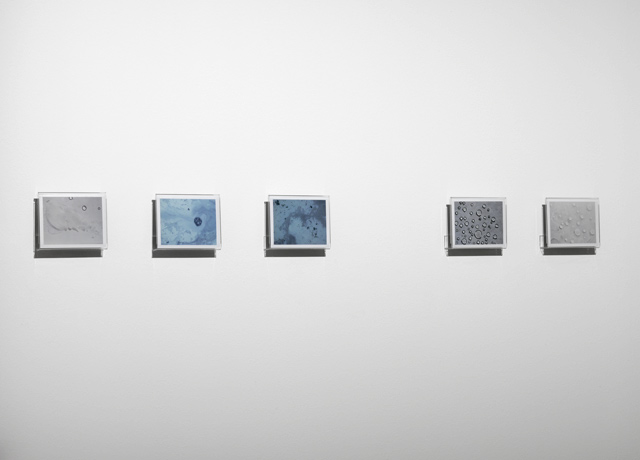
Bologna welcomed me with its cosy medieval city centre, amazing architecture, a very nice host and good food. Continuing to Reggio Emilia the next day by train brought me through the Northern Italian countryside, slightly introducing me to a different reality, the industrial context of the Italian province.
I arrived in Reggio Emilia and a beautiful old city centre welcomed me. The “Albergo delle Notarie” was a distinguished, elegant hotel just next to the main square, the perfect point of departure.
The opening day was very rainy and cold and I decided to have a private look before the opening ceremony, walking to the collection just outside the city, a long but refreshing walk which was rewarded by an amazing and enwrapping exhibition by the Italian but New York based artist Beatrice Pediconi. The title “9′ / Unlimited” only unfolded its meaning after having seen the exhibition.
Pediconi is a painter, using diverse liquids to paint literally in water, using huge water tanks in which she is pouring materials like cream or tempera, and helping the particles to interact with the water by gently moving them around. Her canvas is the water, totally unpredictable. She also is a photographer who captures each image of this process. And a video artist, a sculptor of the ephemeral, but also a performer, even if she is not in the centre of the happening, but the acting behind the scenes with huge water tanks and massive hanging cameras is impressive though not documented. She is an artist whom you can’t put into a drawer, with many facets which are smoothly merging to one homogenous body of work since each layer is interconnected.
Separated into three sections, the visitor first enters the big gallery with polaroids. These, totally self-centered in their small grandiosity, represent a juxtaposition to what the complete body of works shows: the Universe. They are the testimonials of individual phases in the process of Pediconi’s water-paintings, but at the same time artworks on their own, minimally positioned in small groups on each wall, like couples who talk to each other in silent communication. Like minimal art which puts us to silence after a loud abstract expressionist time, so much needed in our upsetting times. Nevertheless it is a room of acting and posing, visitors watch each other in the bright light, think about their appearance, looking for the details in the tiny polaroids, controlling and having everything under control.
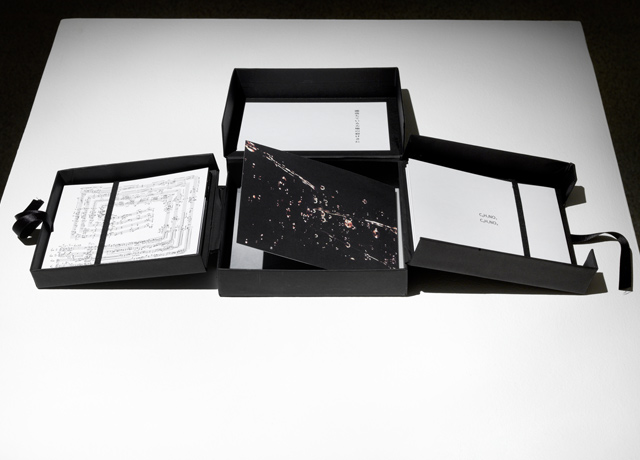 From the “control room” the viewer is lead to an intermediate space where the artist book is exhibited. The book is an artwork itself; it combines in a three-dimensional way the flow of these images and the artistic process through poetry, music and chemistry. The Japanese poet Momoko Kuroda created a haiku, the Roman composer Lucio Gregoretti a musical score and the British engineer Andrea Lerwill a mythic chemical formula. The book represents the often-interdisciplinary work and collaborations of Pediconi with scientists like physicists, mathematicians, chemists, musicians, and writers who support her in her research on the material used, the chemical reactions caused in the process of water painting, the rhythms and concepts of her work in general. The book literally unfolds into all directions, sometimes depending on the situation this becomes a challenge and everything is falling apart.
From the “control room” the viewer is lead to an intermediate space where the artist book is exhibited. The book is an artwork itself; it combines in a three-dimensional way the flow of these images and the artistic process through poetry, music and chemistry. The Japanese poet Momoko Kuroda created a haiku, the Roman composer Lucio Gregoretti a musical score and the British engineer Andrea Lerwill a mythic chemical formula. The book represents the often-interdisciplinary work and collaborations of Pediconi with scientists like physicists, mathematicians, chemists, musicians, and writers who support her in her research on the material used, the chemical reactions caused in the process of water painting, the rhythms and concepts of her work in general. The book literally unfolds into all directions, sometimes depending on the situation this becomes a challenge and everything is falling apart.
From this intermediate space the viewer is guided into the projection room, the centerpiece and heart of the exhibition, where four video walls and the darkness embrace him/her. The viewer has to release, now nobody is watching him/her anymore, he/she converts from subject to object, can’t control the situation anymore, has to lay down on the cushions on the floor, accept the clumsy helplessness and just watch in total silence and devotion, falling into a state of meditation. The large scale video installations on four walls project the same 9-minute sequence with only a very small lapse, the flows of cream in different velocities appear like streams, like explosions, like the universe reborn, the videos flow into each other and provoke the idea of creation of stars and a new planetary system. I felt the video room as a spaceship which pulled us into the universe, into unknown spheres of the Milky Way and the big bang. We could see how new stars were born while the old universe was destroyed. The particles which interacted with the water were getting out of control though the artist kind of dominated the different elements, she had to hand over the control to simple chemical reactions. A beautiful metaphor for the doubtful eternal goal of mankind to dominate nature which tends, and even more often today, to strike back so that we have to hand back control to nature.
I had the opportunity to preview the show together with a group of Guggenheim fellows who came to visit form Venice. We had a “collective experience”, we exchanged with the artist after the first 9-minute loop. Beatrice Pediconi, who is rather a silent, introverted researcher and observer than an extroverted and expressive actor, explained in a few and calm words that her research process is completed when it’s completed, answering the question of a young curator. “It’s completed when I get bored with a material, so maybe I am done with cream but not with water” she said with a twinkle in her eyes.
The duration of each video is 9 minutes, but since it is on loop, the viewer can watch eternally. The unwrapping of the exhibition’s title.
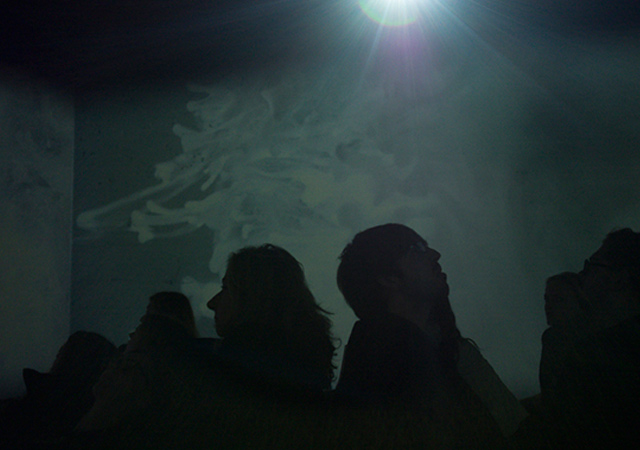
After my first morning visit I headed back to the hotel for a small lunch with other guests: The owner of Sepia Eye Gallery from New York, the chief curator of The Frances Lehman Loeb Art Center, Vassar College in Poughkeepsie, the chief curator of the Gulbenkian Foundation in Lisbon, one of the founders of Bamako Biennale (Rencontres Bamako) etc. We were then brought to a former production hall where the concert “From Source to Sea” with the Icarus Ensemble was taking place. The music performance reminded me of experimental music projects which I had seen so often before since I was a child, but I liked the introductory part when the sounds of landscape (water, forests, birds, etc.) of the specific Secchia River in Val d’Ozola (in the Tuscan-Aemilian Apennines) were performed, a nice meditative excursion. After the concert, buses drove us to the collection Maramotti which is integrated into the former industrial complex of the design label Max Mara (in 2003 Max Mara moved to new premises in the outskirts of Reggio Emilia), actually the employer of the entire city, it seemed. The company, the collection and the family are much respected in the area and the whole complex reminded me of the typical industrial families in Germany, particularly in the South, who invest a lot into their region, who build up cultural and other foundations, art collections and museums to nurture culturally their city or entire geographic
al zone, to give back to their employees and families and contribute to the local quality of life. A very sympathetic detail, besides the kindness, humbleness and generosity of the Maramotti family and the staff of the collection, and I say this without any further intentions, but it is important to point out to this detail in the middle of mesmerizing stardom culture and greed in the general contemporary art world wherever you go today.
The original collection and company Max Mara were started by Achille Maramotti, the father of the current head Luigi Maramotti. Achille built up a collection with the base of European abstract expressionist paintings from the late 40s until early 50s, the Roman school of Pop Art, Italian Arte Povera, mainly paintings, but also some sculptures and installations, which was subsequently enriched by the Italian Transavanguardia, the US New Geometry of the 1980s and 1990s up to more recent experimentations of the United States and Great Britain.
An impressive installation by Rosemarie Trockel, one by Mario Merz, Barry X Ball, another one by Vito Acconci, works by Pier Paolo Calzolari, Anselm Kiefer, Mark Manders, Cady Noland, Enzo Cucchi, just to name a few of the huge list of artists represented in the collection.
Most of the works of the twenty first century though are presented in theme-based shows on the ground floor, like the one of Beatrice Pediconi and at the same time of the German painter Michael van Ofen, who had a smaller show “Germania und Italia The Continuance of the Contemporary” in an adjacent space.
The visit to Reggio Emilia opened a new view onto Italian collectorship and the Italian relationship with contemporary art to me. Some collectors take their responsibility seriously and create a certain revival of the Maecenas, not the one frenetically buying every expensive piece by an artist who is just “en vogue” while jetting over the globe visiting each fashionable art fair, but the one who is really investing into artists and their work after having built up a relationship. A real collector and supporter of the arts who offers space and financial support to the selected artist in order to be able to produce a strong show. I wish there would be more of this kind.

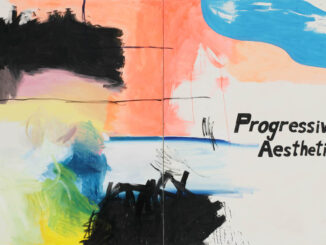
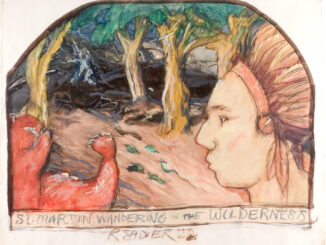
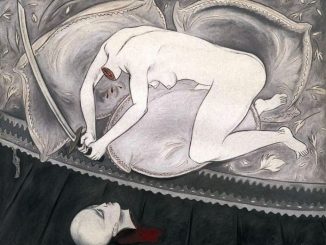
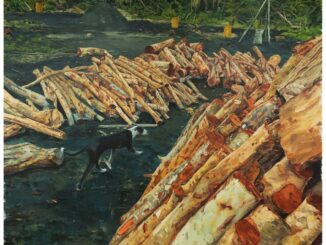
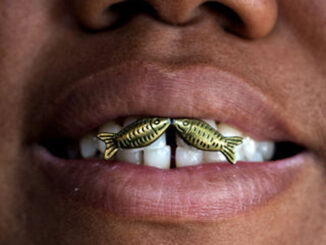
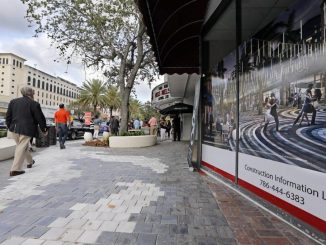
Be the first to comment